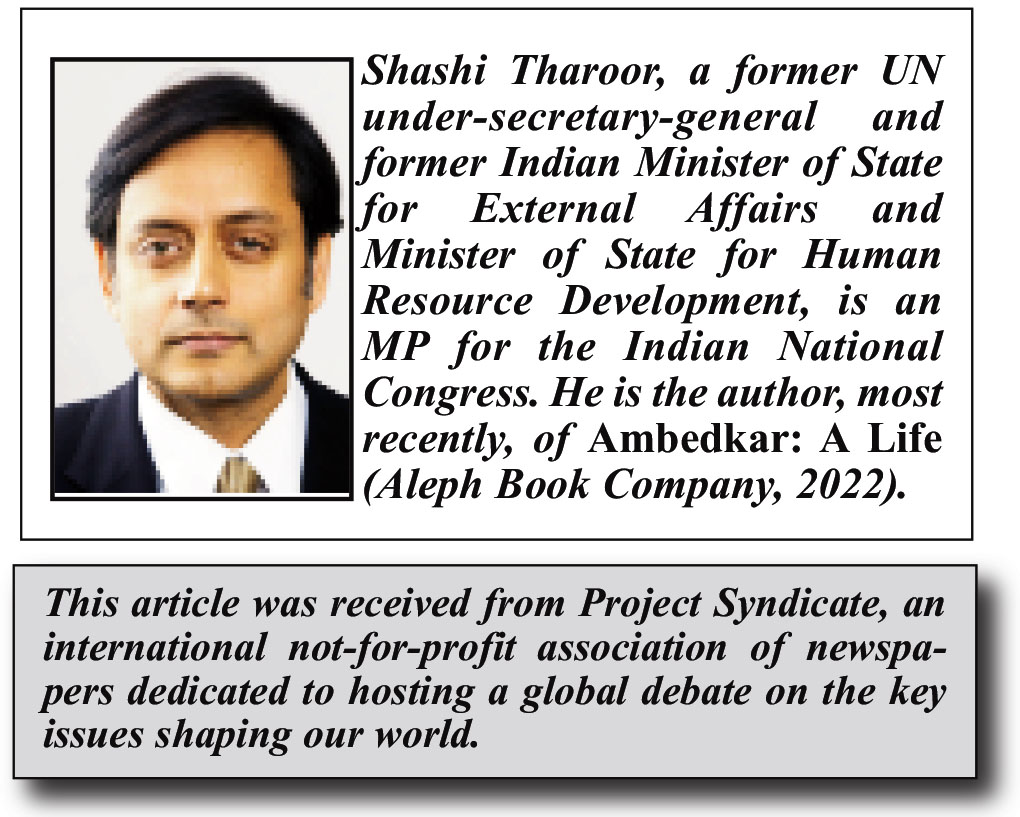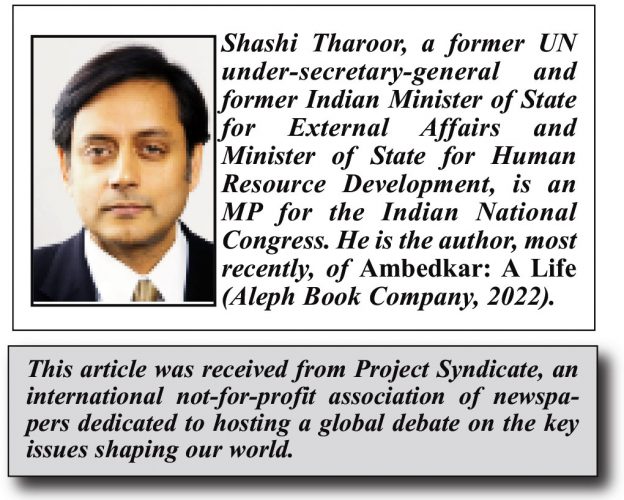NEW DELHI – Tell anyone outside the British Commonwealth that a couple billion people are currently ridden by World Cup fever, and you are likely to be met with a puzzled stare. For most of the world, the World Cup is a football (soccer) tournament that took place in Qatar last year and will not occur again until 2026 in North America. But for the rest of us – most notably, the nearly two billion people of the Indian subcontinent – the men’s cricket World Cup taking place in India right now is what really matters.
The tournament began on October 5, with a match featuring the two finalists from the 2019 World Cup in England. The loser then, New Zealand, exacted revenge, steamrolling England at the cavernous Narendra Modi Stadium in Ahmedabad, which – thanks to the dominance of the stadium’s namesake and Indian prime minister – is widely viewed as India’s new cricket capital. Modi himself is expected to attend the final there on November 19.
As Modi prepares to seek a third term in next year’s general election, his plan to put himself and his Bharatiya Janata Party (BJP) center-stage at the final of India’s most popular event is a calculated political move. An Indian victory in the World Cup final would cap off a string of recent international successes – including the landing in August of a lunar rover on the Moon’s south pole and the September G20 summit – thereby reinforcing Modi’s narrative of national resurgence. (India is a favorite to win, but the competition at this marquee event is always intense.)
For decades, Indian politicians have recognized that associating themselves with cricket wins votes. As a result, there are close ties between Indian politics and the cricket bureaucracy. Jay Shah – the all-powerful secretary of the sport’s governing body, the Board of Control for Cricket in India (BCCI) – is the son of the country’s second-most-powerful politician, Modi’s strongman home minister, Amit Shah. Modi’s late finance minister, Arun Jaitley, was Delhi’s top cricket administrator. Following Jaitley’s death, the national capital’s principal cricket stadium was renamed for him. Modi himself used to head the cricket association in his home state of Gujarat.
Beyond votes, there is a great deal of money – and thus global clout – in cricket. India is said to account for some 90% of the game’s global revenues, dwarfing the older and more established cricket-playing countries. And with annual revenues of $771 million in 2021-22, the BCCI is the world’s richest cricket organization.
India also pioneered the Twenty20 (T20) revolution in world cricket, drawing an even bigger audience with an abbreviated (three-hour) version of the game. T20 is now the most profitable form of cricket, with the hugely popular Indian Premier League (IPL) attracting the world’s best players with multi-million-dollar contracts, which are made possible by the lucrative sponsorships supported by India’s vast television audience. The BCCI’s last five-year deal for IPL rights amounted to $6.2 billion.
As the World Cup gets underway, Indian equities are already booming. A Bloomberg index of stocks associated with the tournament went up 20% in the three months before the event began. Air fares to cities where India is scheduled to play have doubled on match days, and fares to Ahmedabad have shot up by 415%. All told, the World Cup could boost the economy by as much as $2.6 billion.
India’s financial dominance in cricket brings with it disproportionate influence over the sport globally. Jaitley once told me that India’s clout in the International Cricket Council (ICC), the game’s global governing body, was akin to the influence of the United States in the United Nations Security Council.
The BCCI has been able to shape world cricket’s timetables according to India’s interests, especially by guaranteeing a window for the IPL when all players would be available. It has an outsize say in international discussions on future planning, on the sport’s evolving rules, and on the distribution of global revenues. India will get 38.5% of the ICC’s most recent $3 billion media-rights deal.
Likewise, when India refused to send its players to Pakistan to participate in this year’s Asia Cup, the Pakistani cricket board had no choice but to acquiesce to India’s demand that most of the matches be moved to Sri Lanka. Pakistan remained the tournament’s host country, but only nominally.
Cricketing relations between India and Pakistan – both powerhouses of the sport – have been essentially suspended since the 2008 attacks in Mumbai by terrorists from Pakistan. Though one bilateral series took place in India in 2012-13, India has steadfastly refused to send its players to Pakistan.
Moreover, Pakistani players have not played in the IPL since 2008, and are unlikely to be invited to do so until relations with India improve. The two countries meet only in international tournaments – opportunities that Pakistan craves, given the colossal revenues that come from playing India.
The upcoming World Cup game between India and Pakistan – scheduled for today – is thus the hottest ticket of the year. The event will unfold, no surprise, at Narendra Modi Stadium. Hotel room rates in Ahmedabad have spiked 300% for the days around the match, and people are finding it cheaper to check into a hospital for an emergency overnight check-up than to find a hotel to sleep in on the days of the match. No flights are available.
An Indian victory in that game will be seen as one more feather in Modi’s cap and another sign of India’s irresistible rise. An Indian loss, however, would probably inflame the BJP’s Hindu-chauvinist supporters. India’s own Muslim players – there are two in the 15-man squad – may face charges of insufficient devotion to the national cause.
The stakes are far higher for everyone than the mundane issue of who plays better would imply. In India, cricket is much more than a sport; it is also a political tool, a lucrative industry, a source of prestige, and a powerful lever for exerting global influence.
Copyright: Project Syndicate, 2023.


